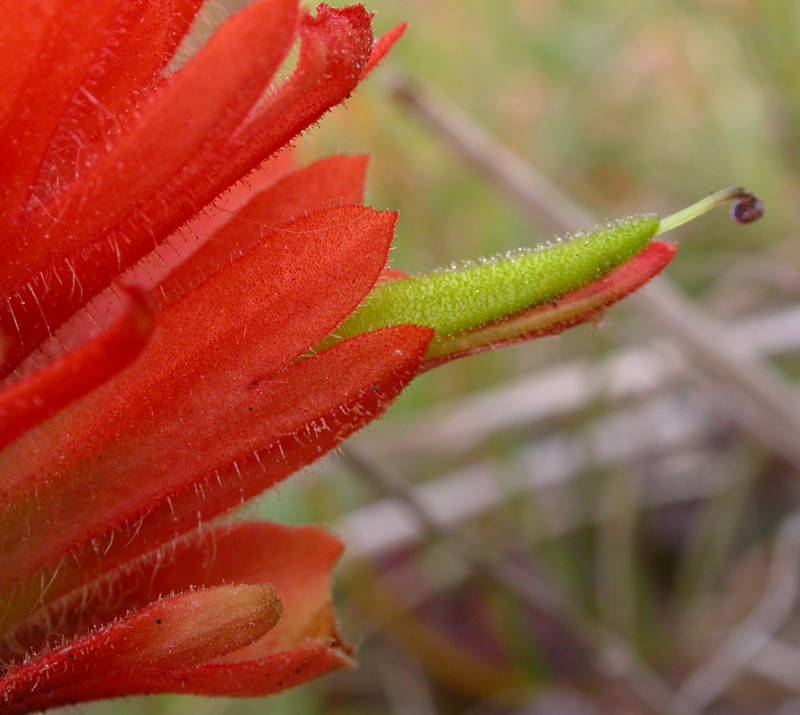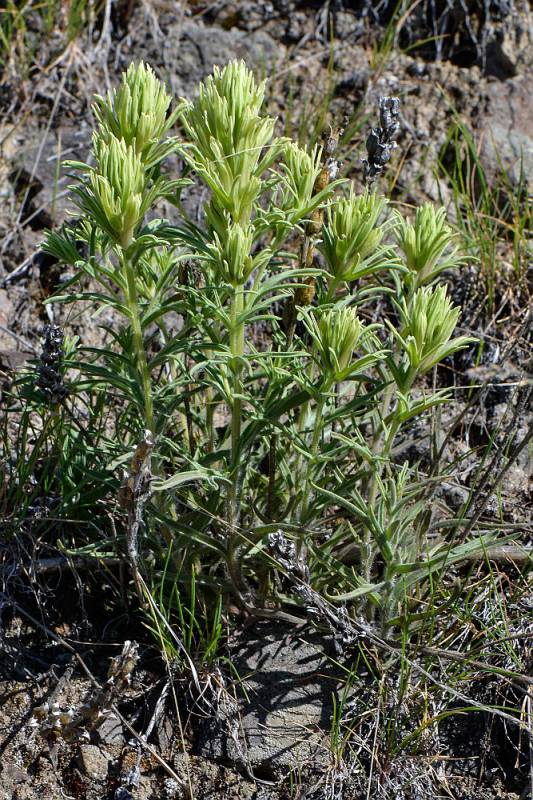Castilleja miniata
Castilleja thompsonii
common paintbrush, scarlet paintbrush
Thompson's paintbrush
Simple, narrow with pointed tip;
inflorescence leaves and bracts bright red, sometimes with a few small lobes.
Lower leaves simple, linear; upper leaves narrow with 3-5 linear lobes; lightly hairy. Inflorescence leaves (bracts) yellowish-tinged.
Inconspicuous, greenish, tubular flowers, surrounded by a much showier bright red calyx and inflorescence bracts.
Calyx 12-25 mm long, maroonish in color, with 4 acute lobes at tip, cleft more deeply above and below than on sides. Corolla incospicuous, greenish, hidden within the more showy calyx, the galea (upper beak) short, the lower lip greater than 1/2 length of galea, scarcely pouched. Ovary superior, 2-celled.
2-celled capsules with many seeds.
Many-seeded capsules.
Our most common Castilleja in the mountians.
Plants found at higher elevations tend to be smaller, less pubescent and more glandular.
Castilleja miniata
Castilleja thompsonii
- Local floras:
BC,
CA,
OR,
WA
- Local Web sites:
CalFlora,
CalPhotos,
Flora NW,
PNW Herbaria,
Turner Photog.
WildflowerSearch
iNaturalist (observations)
USDA Plants Database
- LBJ Wildflower Center
- SEINet
- Plants of the World Online
- Encyclopedia of Life
- Wikipedia
- Google Image Search



